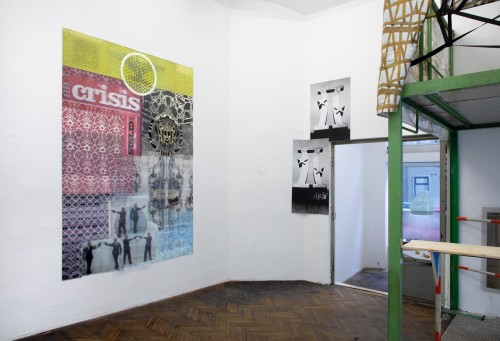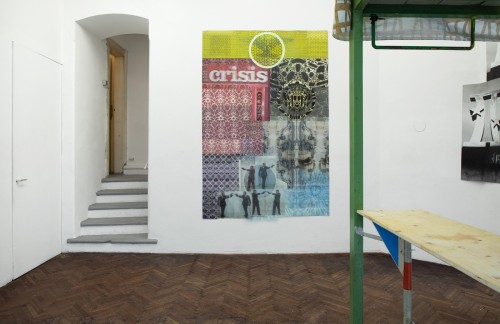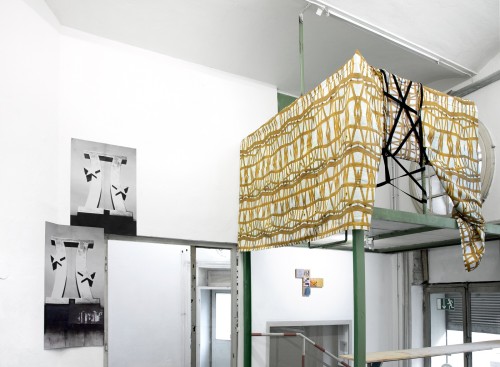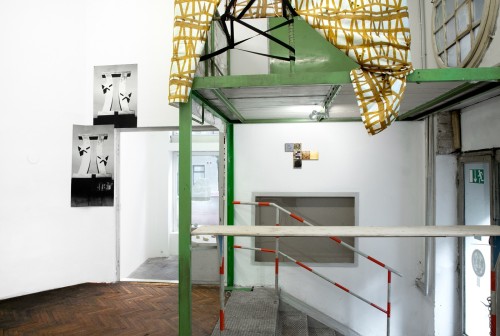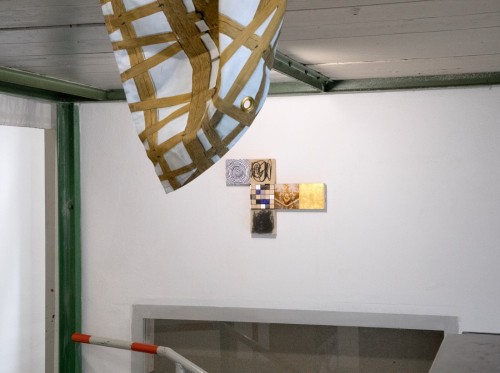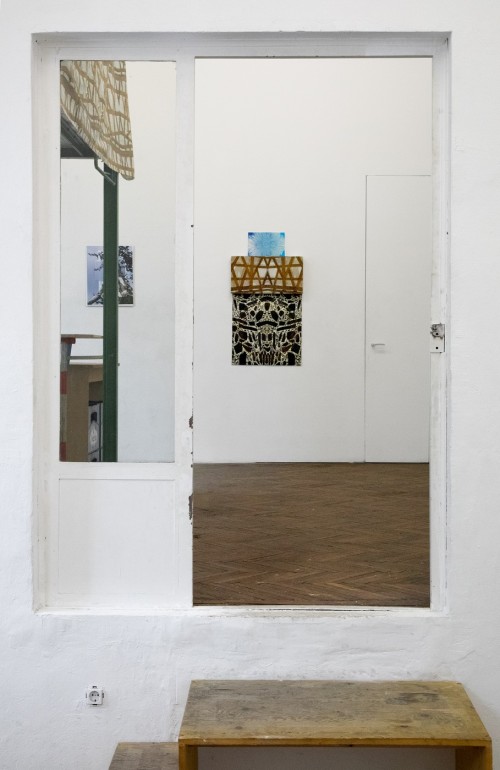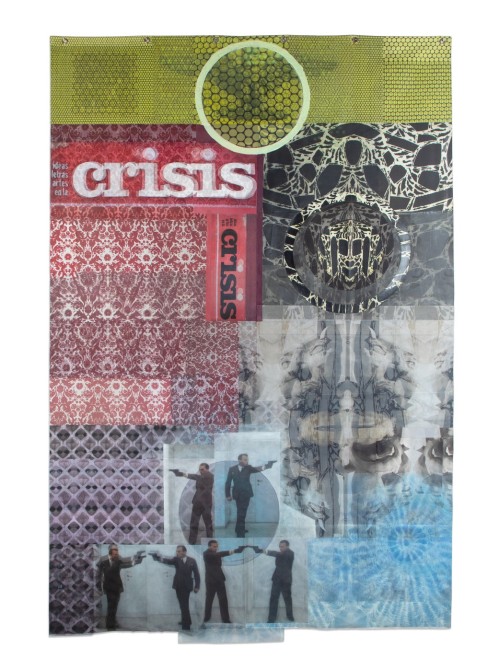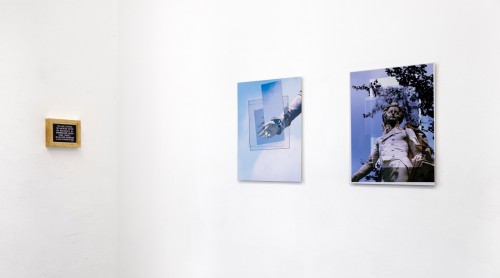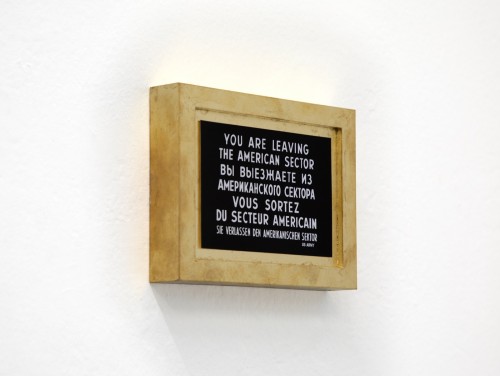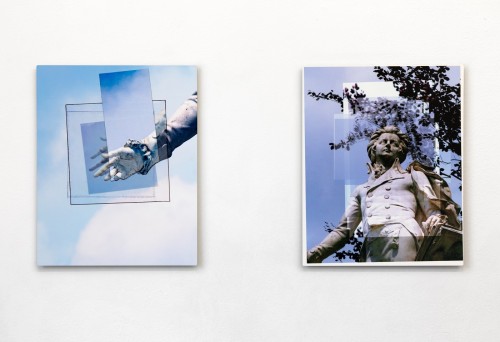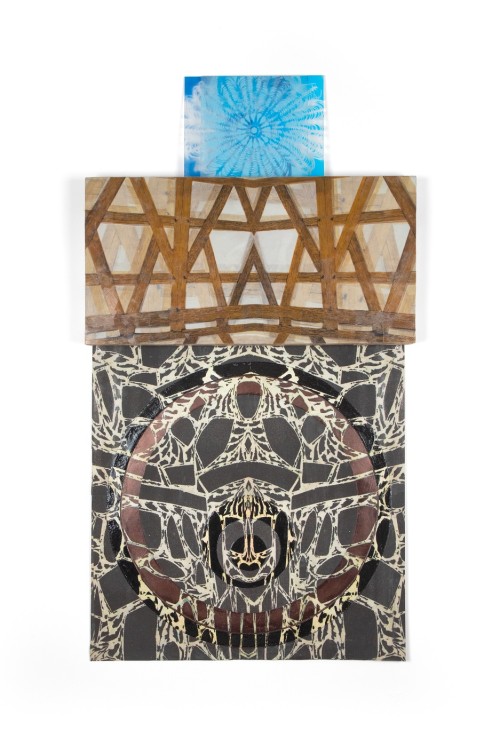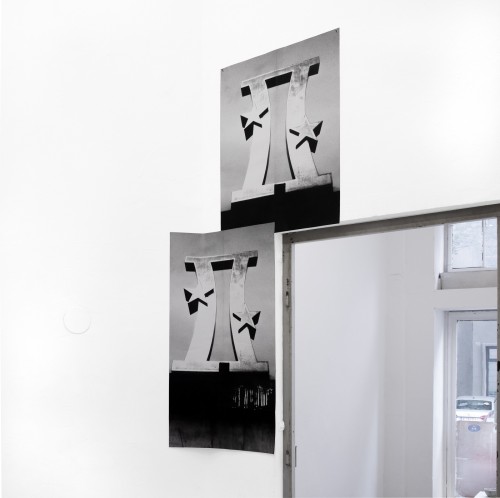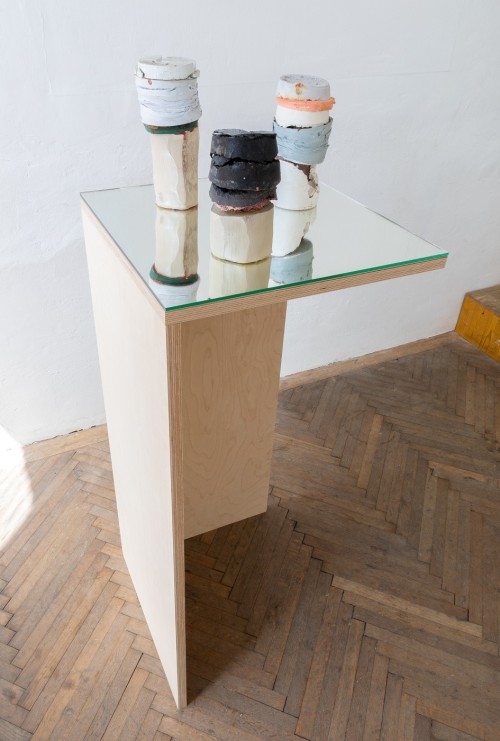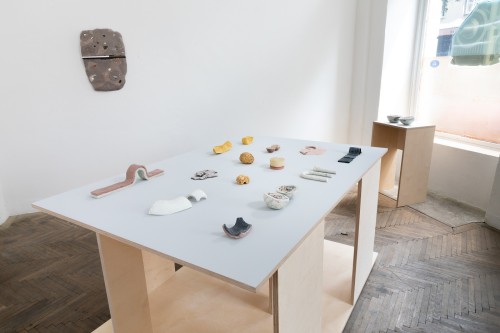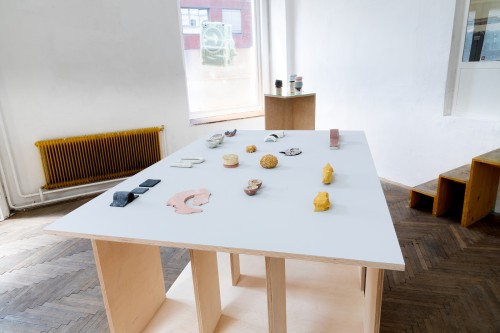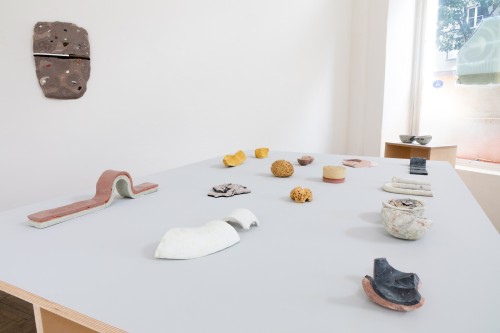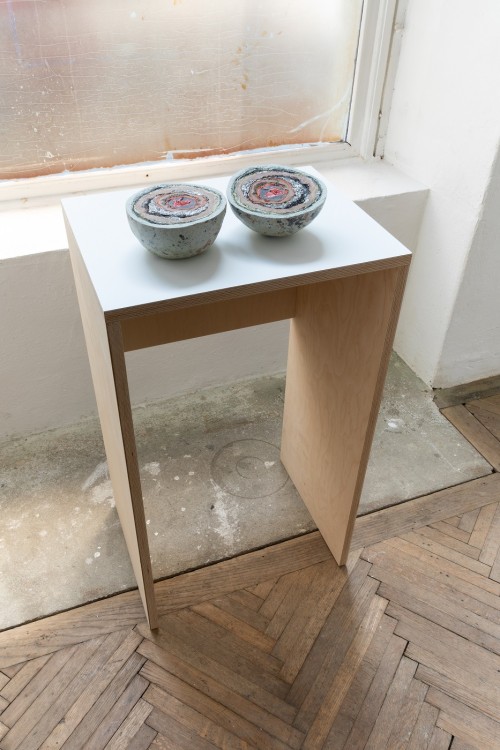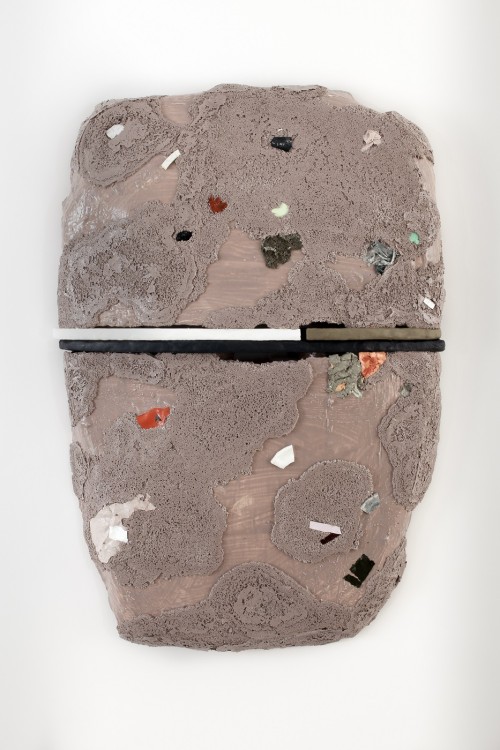patterns of intention
12.07. — 16.08.2019
Eröffnung: 12. Juli 2019, 19 Uhr
Finissage: 16. August 2019, 19 Uhr
Die Ausstellung Patterns of Intention zeigt aktuelle Werke der New Yorker Künstlerinnen
Sarah Trigg und Ana Wolovick und wird in zwei separaten Räumen der
künstlergeführten Galerie New Jörg ausgestellt. Der vordere Raum ist Triggs
Skulpturen vorbehalten, während Wolovicks wandorientierte Werke sowie eine Loftnstallation
dem angrenzenden Raum vorbehalten sind. Patterns of Intention entstand
aus dem Dialog der beiden Künstlerinnen bezüglich der Idee von Überresten und deren
Beziehung zur Funktionalität von Schichtungen, Wiederholungen und Mustern.
Diese Überlegungen werden mithilfe von konzeptionellen und physischen Mitteln erforscht.
Trigg bezeichnet die hier ausgestellten Werke als zweite Ausgabe ihrer kürzlich
in der New Yorker Black Ball Projects Galerie stattgefundenen Ausstellung Territorial
Expansion of the Innermost Continent, welches ihre erste Einzelausstellung
seit der Veröffentlichung ihres Buches STUDIO LIFE: Rituals, Collections, Tools,
and Observations on the Artistic Process (Princeton Architectural Press) war.
Diese nun in Wien zu sehende Variation von Triggs Ausstellung betont Übersetzung
und magnetische Kräfte, die jedoch einen jenseitigen Ursprung haben. In der Mitte
des Raumes ruht ihre Arbeit Love Letter Partially-Transcribed (2019), bestehend
aus handgroßen geometrischen und fühlbaren Objekten, die wie im Morsecode ausgerichtet
sind. Die lineare, aber abgehackte Anordnung der Beine des Podests wiederholt
diejenige der auf dem Tisch liegenden Objekte.
Neben Love Letter steht ein verspiegeltes Podest, welches drei kleine Totems aus
Ton, Acryl und Farbschichten präsentiert, die ihrer aktuellen Reihe Another Word
for Chess entnommen sind. Die Idee zu dieser Reihe kam Trigg, als sie nach vorübergehendem
Aufenthalt zur Arbeit an ihrem Buch wieder in ihr Studio zurückkehrte
und bemerkte, dass während ihrer Abwesenheit die Acrylfarben in ihren Eimern
getrocknet waren. Indem sie diese wie Eierschalen aufbrach, nutzte sie die
unabsichtlichen Abdrücke als Ausgangspunkt, um gehäufte, säulenartige Stücke aus
Überresten des Ökosystems Studio zu kreieren. Sie betrachtet diese als geologische
Kernproben ihrer Studioarbeit.
Auf einem dritten Podest ist eine von Triggs geoden-ähnlichen Sphären zu sehen,
Halved Planet with Red Cores (2019), die eine unerklärliche innere Aktivität darstellt.
In einer anderen Ecke hängt das einzige Wandstück ihrer Ausstellung – Polar
Opposites (2019), das aus zwei Teilen von erdiger, lila-grauer Materie besteht,
die vereinzelt Farbflecken besitzt, welche scheinbar in der Mitte zusammen
magnetisiert sind.
In Wolovicks Installation What Goes Around Comes Around (2019) wird das Loft der
Galerie von einem Patchwork aus Stoff, welches digital mit einem Fachwerkmuster -
dem allgegenwärtigen Motiv der mitteleuropäischen Architektur - bedruckt ist,
ausgefüllt. Das eingewickelte Loft wird von Schnüren und einem mit Fachwerk bedrucktem
Element aus Lycra unterbrochen, das seine ursprüngliche Einkapselung
dehnt und verzerrt, um die Struktur des Raums gleichzeitig zu zeigen und zu verstecken
– damit ansprechend, was wir sehen können, wollen und dürfen.
Gemini (2019), ein vertikal wiederholtes Bild des NASA Denkmals für die Gemini –
Weltraummissionen, ist an der Grenze zwischen den beiden Galerieräumen angebracht,
damit die Dualität von Raum, Ort, Inhalt und Kontext unterstreichend.
Der Wandteppich Large Crises (2019), der in seinen Dimensionen genau das große,
ihm gegenüberliegende Fenster spiegelt, ist eine Collage welche digital auf Stoff
gedruckt wurde. Die im Teppich verarbeiteten Bilder wurden an vielen verschiedenen
Orten aufgenommen, unter anderem: ein digital konstruiertes Muster basierend
auf schwarzweißen Marmorsäulen in der Münchner Residenz; Kacheln aus den UBahnstationen
Berlins; das Muster der Fassade des ehemaligen Stasi Hauptquartiers;
die faschistischen Dekorationen des Mailänder Hauptbahnhofs; ein psychedelisches
Spitzendeckchen; das argentinische Untergrundmagazin Ideas, Letras, Artes
en la Crisis; und Standbilder aus Bertoluccis Film Il Conformista. Durch das ganze
Werk hallen Kreise abstrakt wieder, sich damit auf die zyklische Wiederholung
der nicht allzu fernen Geschichte beziehend.
Herr Fachwerk (2019) ist eine Arbeit in 3 Teilen. Der oberste Abschnitt besteht
aus mehreren Schichten Acrylplastik, besprüht mit dem psychedelischen Spitzendeckchen,
die an der Wand und oberhalb des mittleren Abschnitts lehnt; dieser
zeigt mit Fachwerk bedrucktes Lycra, das sich über Leinwände erstreckt; darunter
befindet sich das oben genannte Muster der Säulen der Münchner Residenz. Diese
Elemente formen zusammen eine physische Collage.
Zwei andere Werke zeigen eine Hommage an Österreichs Landessohn – Mozart. Die
Statuenhand des Komponisten in Mozart’s Hand (2018) involviert auch Wolovicks
Hand; während er in Mozart in Multipicity (2019) durch einen Prozess aus prozessbasierter
digitaler Verdopplung und Schichtung beschrieben wird.
Wolovick spielt in Various Tropes (2019) mit den Möglichkeiten und dem Potenzial,
einen Abdruck in der Welt zu hinterlassen; im Kontext unseres kollektiven und offensichtlichen
Wunsches, die Wiederholung möge sich durchsetzen.
Sarah Trigg, geb. in Appleton, Wisconsin (1973)
Trigg arbeitet als Bildhauerin, Malerin, Fotografin und Autorin. Ihre Einzelausstellung
Territorial Expansion of the Innermost Continent – eine neue Sammlung
von Skulpturen – wurde diesen Mai in der Black Ball Projects Galerie in New York
City eröffnet. Ihre Arbeiten wurden in weiten Teilen New Yorks und im Rest des
Landes ausgestellt, so zum Beispiel im Neuberger Museum of Art (Purchase, NY), im
Bronx Museum of the Arts (NY) und im Weatherspoon Art Museum (Greensboro, North
Carolina). Über sie berichtet haben u.a. The New York Times, artnet, New York magazine,
Modern Painters und The Brooklyn Rail. Triggs Buch STUDIO LIFE: Rituals,
Collections, Tools, and Observations on the Artistic Practice, das ihre Fotografien
und Texte enthält, ist bei Princeton Architectural Press erschienen. In
einer anthropologischen Herangehensweise befragte Trigg für ihr Buch 100 USamerikanisch-
stämmige Künstler über ihre künstlerischen Praxen. Sie hat bis heute
über 200 Künstler und Künstlerinnen befragt – als Teil ihres Projekts The Goldminer
Project (thegoldminerproject.com). Trigg lebt und arbeitet in Brooklyn, NY.
Ana Wolovick, geb. in New York City (1973)
Wolovick machte ihren BFA am Art Center College of Design in Pasadena, CA (1997)
und ihren MFA in Malerei an der Yale University (2005), im Rahmen des Jacob K.
Javits Fellowships. 1998-99 arbeitete sie mit Bildhauer Charles Long an drei digitalen
Druckeditionen, die heute in mehreren staatlichen Sammlungen zu sehen
sind. Wolovick nahm an Künstleraufenthalten in Altos de Chavon, Dominikanische
Republik (2002) und mit Culture Vultures in Sefrou, Marokko (2017) teil. Sie war
Teil der Einführung des „Walking Seminar“ mit Beta Local in Puerto Rico (2013);
und eine Teilnehmerin des „SOMA Summer Program“ in Mexiko City, Mexiko (2015).
Wolovick war 2015 eine Mitgründerin der Galerie „Black Ball Projects“; und ist
heute die Geschäftsführerin der Galerie in ihrer neuen Rolle als Non-Profit-
Organisation. Sie lebt und arbeitet in ihrem Studio über ihrer Galerie in
Brooklyn, NY.
Patterns of Intention wird am Freitag, den 12. Juli eröffnet und bis zum 16. August
zu besichtigen sein.
Die Galerie zu besuchen ist nur mit Termin möglich. New Jörg wird einen die Ausstellung
begleitenden Katalog herausgeben. Dessen genaue Erscheinungsdatum wird
noch bekanntgegeben.
///
Patterns of Intention, a two-person exhibition features recent work by New York
basaed artists Sarah Trigg and Ana Wolovick—installed in the two separate spaces
at artist-run gallery New Jörg. Trigg’s sculptural work inhabits the gallery’s
front room while Wolovick’s wall-based work and loft-installation occupies the
adjacent exhibition space. Patterns of Intention grew out of the artists shared
dialogue regarding the residue and its relationship to the functioning of layering,
repetition and patterning— explored through conceptual and physical means.
Trigg denotes this body of work as the second iteration of her recent exhibition
Territorial Expansion of the Innermost Continent at Black Ball Projects in New
York—her first solo exhibition since the launch of her book STUDIO LIFE: Rituals,
Collections, Tools, and Observations on the Artistic Process (Princeton Architectural
Press).
Now in Vienna this exhibition variant emphasizes translation and magnetic forces—
albeit otherworldly in origin. In the center of the room rests her large table
piece Love Letter Partially-Transcribed (2019) hand-sized geometrical and tactile
objects—laid out as if in Morse code. The linear, but staccato, placement of the
pedestal legs repeat the order of objects on the tabletop.
Beside Love Letter is a mirrored-top pedestal presenting three small totems of
clay, acrylic, and house paint layers from the artist’s ongoing series Another
Word for Chess. This series originated from the artist’s return to her studio after
her sojourn documenting and writing her book, only to find that her acrylic
paints had dried in their containers. Cracking them open like egg shells she used
the unintended castings as a starting point to create stacked column-shaped pieces
from the studio’s ongoing ecosystem of residue. She thinks of them as geological
core samples of her studio practice.
On a third pedestal is one of Trigg’s geode-like spheres Halved Planet with Red
Cores (2019), displaying unexplained internal activity. In another corner hangs
the exhibition’s sole wall piece—Polar Opposites (2019) of two sections of earthy
purplish-gray matter with flecks of color seemingly magnetized together at the
middle.
In Wolovick’s installation What Goes Around Comes Around (2019) the gallery’s
loft space is enveloped by a patchwork of fabric digitally printed with a
fachwerk pattern—the ubiquitous architectural motif of central Europe. Wolovick’s
wrapped loft is disrupted by twine and a fachwerk-printed lycra element that
stretches and contorts her initial encapsulation to reveal and cover the structure
of the loft—addressing what we can, want, and are allowed to see.
Gemini (2019), a vertically repeated image of NASA’s monument to the Gemini
space-missions is hung at the border between the two gallery rooms, emphasizing
the duality of space, place, content and context.
The tapestry Large Crises (2019) with dimensions that mirror the sizable window
it hangs across from, is a digitally printed fabric-based collage. The imagery
was shot (onsite) from a variety of locations including: a pattern digitally constructed
from black and white marble columns in the Munich Residenz; tiling from
Berlin’s subway system; the exterior wall of former Stasi Headquarters; the fascist
decorations from Milan’s Central Station; a psychedelic doily; the underground
Argentine Magazine Ideas, Letras, Artes en la Crisis; and stills from Bertollucci’s
film Il Conformista. Circles reverberate abstractly throughout—
referencing the circular repetition of a not-too-distant history.
Herr Fachwerk (2019) is a work in 3 parts. The top section is layers of acrylic
plastic—spray painted with the psychedelic doily, resting against the wall and on
top of the mid section—which consists of fachwerk-printed lycra layers stretched
over canvas bars. Beneath is another take on the pattern created from the marble
columns at the Munich Residenz. Together these elements form a physical collage.
Two other works pay homage to Austria’s native son—Mozart. The composer’s statued
hand in Mozart’s Hand (2018) has the artist’s hand involved, while in Mozart in
Multipicity (2019) he is described through a process of algorithmic digital duplication
and layering.
In Various Tropes (2019) Wolovick plays with the possibilities and potentialities
of mark making—within the context of our collective and obvious desire for repetition
to prevail.
Sarah Trigg, b. Appleton, Wisconsin (1973)
Trigg is a sculptor, painter, photographer, and writer. Her solo exhibition Territorial
Expansion of the Innermost Continent—a new body of sculptures—debuted
this past May at Black Ball Projects (New York, NY). Her work has been exhibited
widely in New York and across the U.S. including the Neuberger Museum of Art
(Purchase, NY), the Bronx Museum of the Arts (NY) and the Weatherspoon Art Museum
(Greensboro, North Carolina) and has been featured in the New York Times, artnet,
New York magazine, Modern Painters, and The Brooklyn Rail. Trigg’s book STUDIO
LIFE: Rituals, Collections, Tools, and Observations on the Artistic Practice of
her photography and writing was published through Princeton Architectural Press.
With an anthropological approach, Trigg surveyed the artistic practices of 100
US-based artists for the book out of over 200 artists she has documented to date
for her project—The Goldminer Project (thegoldminerproject.com). Trigg lives and
works in Brooklyn, NY.
Ana Wolovick, b. New York City (1973)
Wolovick received her BFA from Art Center College of Design in Pasadena, CA
(1997) and her MFA in Painting from Yale University (2005), where she was a Jacob
K. Javits Fellow. In 1998-9 she collaborated with sculptor Charles Long on 3 digital
print editions which are held in several institutional public collections.
Wolovick has been an Artist-In-Residence at Altos de Chavon, in the Dominican Republic
(2002) and with Culture Vultures in Sefrou, Morocco (2017). She was part
of the inaugural “Walking Seminar” with Beta Local, in Puerto Rico (2013); and a
participant in the “SOMA Summer Program” in Mexico City, Mexico (2015). Wolovick
co-founded the artist-run gallery “Black Ball Projects” in 2015; and is now its
Executive Director in its new incarnation as a Not-For-Profit Gallery and Organization.
She currently lives and works in her studio above the gallery in Brooklyn,
NY.
Patterns of Intention opens on Friday, July 12 and runs thru August 16. The gallery
is open by appointment only. There will be a catalog produced by New Jörg to
accompany the exhibition, available at a date yet to be announced
